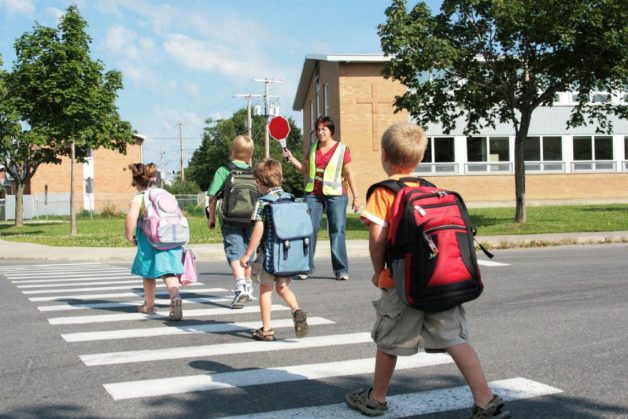There’s been a lot of debate over the years about what age you should let your child walk to school alone.
I started walking to school without my mum when I was 8. My school was in sight of my house and I walked with a friend.
Looking back now as a parent myself, I’d say I was far too young, but in the 80’s it was different. Everyone was far more relaxed and children had more freedom and responsibility.
My little ones are turning 6 and 7 next week, and I think it’ll be a very long time before they go to school alone.
It’s not just the fact that we live too far away from school to walk, but more that as much as I’m sure they’ll be responsible and sensible, someone else might not.
The ‘what ifs’ make the risks too high for me until they’re much, much older – perhaps in their teens, and if that makes me a paranoid worry-mum, I really don’t care.
In a 2012 *survey, The average age UK parents said a child is fine to walk to school unaccompanied by an adult, was 10.
Today on social media, the majority suggested that 11 or 12 (high school) was more acceptable.
As with most things parenting I really think it’s a child thing and not an age thing.
Some 11 year olds are mature and responsible, while others are not. It’s really a decision that only you as a parent can make based on your own child’s abilities.
Letting your child walk to school
Preparation is key: talk to your child about timings, routes and responsibility.
If they are prepared for the school run walk, then they’ll feel safer and happier about making the independent leap forward.
Talk about how long it takes to get there, what time they’ll need to leave, and his it’s essential they communicate if there are any issues (running late or after school club cancelled)
Practice the route: It’s ideal to practice the walk a couple of times before school starts to get the timings right.
You don’t want your child arriving late (and upset) because they thought walking would take less time than it actually did!
Find and practice the safest place to cross any roads and insist your child uses the school crossing (or pedestrian crossing) if there is one available.
If you live further away from school – consider using public transport. Again ~ practice the journey ahead of school so the timings are well known and worked out.
Communication is key: Consider a mobile phone. It doesn’t have to be an expensive smart phone – a simple phone to keep in touch via text on school runs is ideal.
Get your child to understand that communication is very important. You need to be told of any changes or, if they are worried at anytime on their walk, they need to call you right away. Safer is better than sorry!
All weather preparation: Ensure your child is well equipped for the weather. Sun cream and sun hats in summer, warm coat, hat and gloves in winter. Also use light reflectors in the darker months so your child can be seen clearly.
Invest in a good umbrella too to avoid the drowned-rat look on arrival at school.
Safety in numbers: Organise for your child to walk with someone else if possible.
A friend or group of friends makes the journey more fun and more safe so have a chat with other parents who may be thinking about letting their child walk to school.
Whatever age you decide to let your child walk to school, take the time and effort to make it work well for you all. It’ll save stress and worries in the long run.
*research 2012 via gov.uk









Leave a Reply